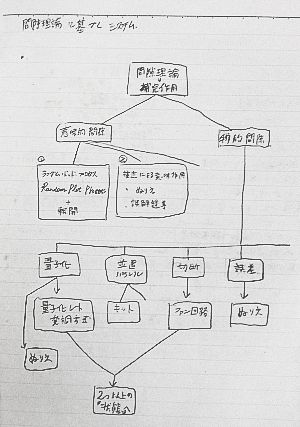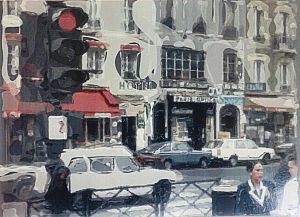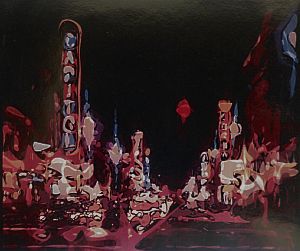




The pairing of incomplete information with nearby information seems to have the ability to induce imagination to supplement the information. Let's try to use this property to control our imagination.
Ho[ ]
What's this?
Ho[ ] Ski[ ]
We'll accelerate gradually,
Ho[ ] Ski[ ] Jum[ ]
You must have flown quite a distance!
The [] part is a gap that has no meaning, and I named it the "Imaginary Symbol".
Think of the imaginary symbol as receiving information from you, whereas the real symbol near the imaginary symbol is sending information to you.
However, imaginary symbols are like spaces between lines or margins without any promises like real symbols, and their contents can be basically anything.
Considering the amount of information (imagination) in such imaginary symbols, their capacity would be as unmanageable as a bucket with a hole in it.
However, in reality, the imaginary symbol is softly covered by the surrounding context, and in the example above, you can see how the imaginary symbol becomes more and more redundant as the amount of information in the context increases.
In the example above, you can see how the imaginary symbols become more and more redundant as the amount of information in the context increases.
Now, people need a moderate amount of redundancy to exchange information, and too much information will not work. This is also true in the imaginary direction.
In other words, if you suddenly confront a blank canvas, nothing will happen, but by controlling the amount of imaginary symbols, it is possible to start a small imagination, gradually amplify it, and lead it to a large imagination.
One of the conditions of science is verifiability. Spiritual phenomena, including art, do not easily become the subject of science because they vary from person to person and it is difficult to even objectify the phenomena themselves. However, as long as many people recognize the existence of art, there seems to be a way to apply objectivity and logic to it, and if we can derive art that can be evaluated objectively, even if it is a theory that only works for ourselves, such a fictional theory is not something to be discarded. I have been researching how art is generated through the theory of imaginary circuits. In this retrospective exhibition, I hope you will be able to verify such a mad experiment. If you can generate an aura in your consciousness that can be called a kind of art, then the experiment is a success.
From here on, the projects and works are displayed in chronological order.
The exhibition starts with the newest projects and moves backward in time as you move through the pages.
If you follow the "next chapter " link in each chapter, you can get a quick overview.
" link in each chapter, you can get a quick overview.
This exhibition is a project that foreshadows the artist's large underground world by throwing a little real light into the imaginary darkness, and I hope people will look at it as if they were looking through a telescope or microscope.